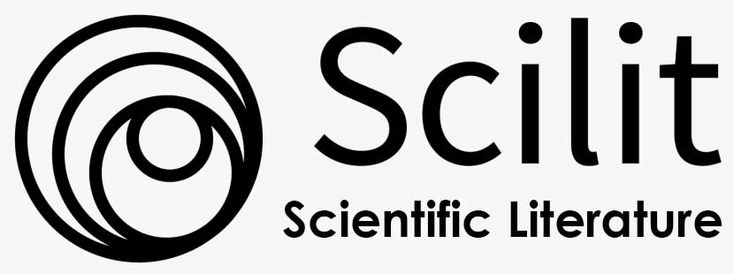WASTEWATER TREATMENT OF NPK FERTILIZER INDUSTRY USING SEQUENCING BATCH REACTOR AND GRANULAR ACTIVATED CARBON
Abstract
contains COD, TSS, PO4, and Total-N pollutants that can contaminate water bodies if the treatment process is not carried out first. In this study, the NPK fertilizer industry waste treatment was carried out using sequencing batch reactors (SBR) and granular activated carbon (GAC) by adding the coagulation-flocculation process as a pre-treatment so that wastewater can meet the established quality standards. In this study, the reactors were operated at HRT 12, 24, and 48 hours using a GAC mass concentration of 0.5, 1, and 2 g/L. The results show the highest reduction of COD parameters by 67%, TSS by 82%, PO4 by 45%, Total-N by 76%, optimal HRT by 48 hours, and an optimal GAC mass concentration of 2 g/L. The aeration rate is operated at 14 L/min, with a PAC concentration of 3 g/L being optimal.
Keywords
Full Text:
PDFReferences
Abu Akhmad B, Diah Susanti, Hariyati Purwaningsih. 2007. “Eceng Gondok Merupakan Tumbuhan Air Yang Dikenal Sebagai Limbah Dan Dapat Menimbulkan Berbagai Masalah. Untuk Memanfaatkan Eceng Gondok, Maka Dalam Penelitian Ini, Eceng Gondok Diolah Menjadi Karbon Aktif. Eceng Gondok Dikarbonisasi Di Furnace Kedap Udara.”
Azhdarpoor, Abooalfazl, Payam Mohammadi, and Mansoureh Dehghani. 2014. “Removal of Phosphate from Municipal Wastewater Using Anaerobic / Aerobic Modified SBR Reactor.” International Journal of Environmental Science and Toxicology Research 2(8):152–59.
BSI. 2010. “SNI 2803:2010 Tentang Logam.” Jakarta : Badan Standar Nasional 1–18.
Handayani, D., M. Endy Yulianto, Fahmi Arifan, and Endah Lestari. 2009. “Pengembangan Sequenching Batch Bioreactor Untuk Produksi Plastik Biodegradable (Polihidroksialkanoat ) Dari Limbah Cair Industri Tapioka.” 58– 65.
Haque, Errilia Afifah. 2017. “Pengolahan Air Limbah Rumah Sakit Dengan Sistem Lumpur Aktif Model SBR Skala Laboratorium.” 1–105.
Hendrasarie, N., Febriana., F. 2022. “Efektivitas Penambahan Serabut Kelapa Dan Kulit Buah Siwalan Sebagai Adsorben Dan Media Lekat Biofil Pada Pengolahan Limbah Domestik Menggunak SBR.” Jurnal Envirotek 14(1):98–105.
Hendrasarie, Novirina, and Andhika Pratama Andhika. 2021. “Efektivitas Penambahan Green Adsorbent Di Sequencing Batch Reactor Untuk Menurunkan Parameter Bod, Tss, Dan Warna Pada Limbah Industri Batik.” EnviroUS 2(1):9–17.
Ikhwan, Arum Alfianur. 2020. “Cycle Time Dan Kondisi Operasi Pengolahan Biologis Sequencing Batch Reactor (Sbr) Dalam Penyisihan TN dan TP.”
Metcalf, & Eddy. 2003. Waste Engineering Treatment and Reuse. In Bulletin of the International Union Against Tuberculosis and Lung Disease. (Vol. 65, Issues 2–3, pp. 7–9). McGraw-Hill Companies, Inc
Putra, Hoppy Adi. 2016. “Analisa Pengaruh Penambahan Karbon Aktif Dan Current Collector Terhadap Sifat Kapsitif Superkapasitor Berbahan Graphene.” 10– 11.
Rao,. N.S.S. 2010. Mikroorganisme tanah dan pertumbuhan tanaman. Edisi Kedua. Penerbit Universitas Indonesia. Jakarta.
Said, N.I. (2017). Waste Water Treatment Technology. Erlangga Publisher.
Sirianuntapiboon, Suntud, and Kwannate Manoonpong. 2001. “Application of Granular Activated Carbon- Batch Reactor (GAC-SBR ) Sequencing from System for Treating Wastewater Slaughterhouse.” Technology 6(1).
USEPA. 2010. “Nutrient Control Design Manual.” United States Environmental Protection Agency 2009(August):1–104.
Yustinawati, Nirwana. 2014. “Efektifitas Poly Aluminium Chloride (PAC) Pada Pengolahan Limbah Lumpur Pemboran Sumur Minyak.” Jurnal Online Mahasiswa Fakultas Teknik Universitas Riau 1(2):1–10.
DOI: http://dx.doi.org/10.21776/ub.jeest.2022.009.02.6
Refbacks
- There are currently no refbacks.

This work is licensed under a Creative Commons Attribution 4.0 International License.







